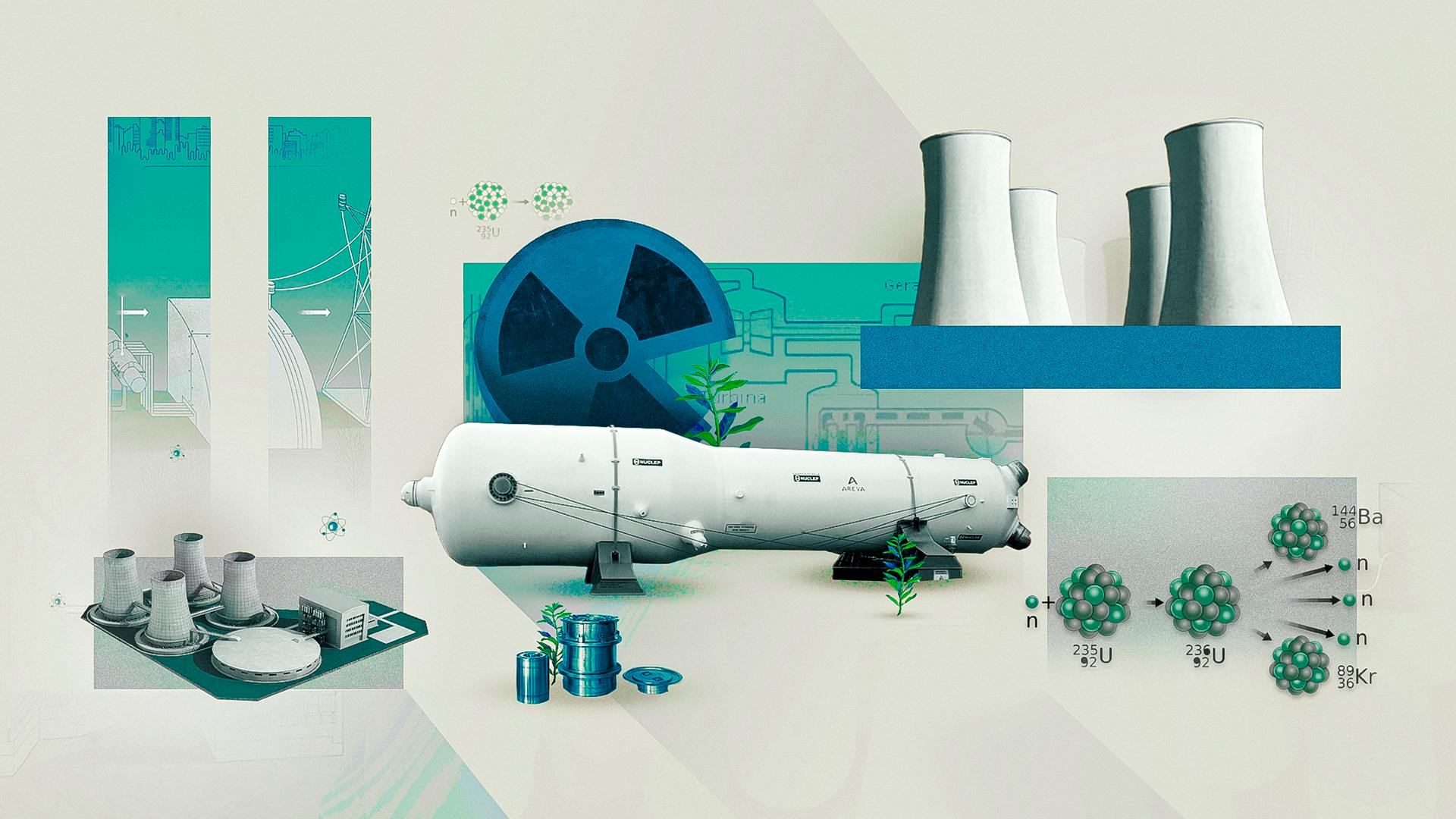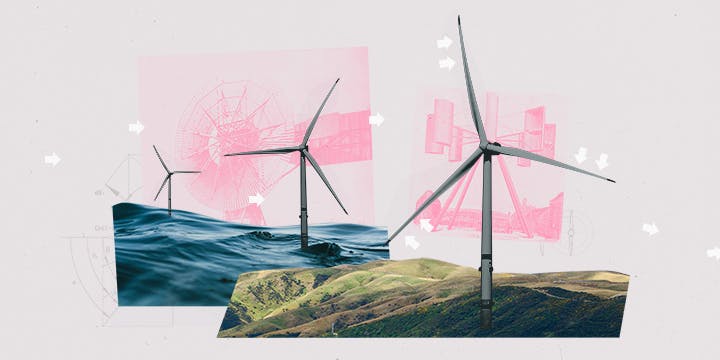Nuclear energy has the highest capacity factor of any fuel source, making it the most reliable and most powerful means of producing power by far. It relies on breaking the strongest force known in physics — the strong force — which on its own is over 100 times stronger than the force of electromagnetism.
Although nuclear energy has been around for 70 years, and despite its potential to provide relatively cheap and abundant power, it never quite achieved that potential. Fears of nuclear accidents or reactor mismanagement, along with the growing costs of building new nuclear plants, have put the brakes on the nuclear energy industry for decades. Today, nuclear power supplies roughly 10% of the world’s electricity, about as much as it did 20 years ago when nuclear power plant construction plateaued.
Not only has the construction of nuclear energy plants stagnated, but some nations (like Germany) are actively shuttering the ones they already have. Around the world, new nuclear capacity has been falling over time, especially relative to the growth of novel renewable energy capacity like wind and solar. Only 2.4 GW of nuclear power came online in 2019, as opposed to 98 GW of solar and 58.3 GW of wind.
Despite this, there are encouraging signs on the horizon for nuclear energy. The driving force behind this is innovations that have made small, modular nuclear reactors viable for the first time. These “microreactors” promise solutions to many of the issues that have plagued nuclear energy from the early days, including the high cost of reactor construction and the problem of nuclear waste disposal. If that promise is realized, it could usher in a new age of nuclear energy.
The US Nuclear Industry Today
The United States has the largest nuclear industry in the world, albeit one that is dwindling over time. It boasts over 90 active reactors in 2023, though all of these were built in the 1960s or 1970s and rely on some of the oldest and earliest nuclear reactor designs. The number of active reactors in the US, however, continues to fall as older reactors are decommissioned and taken offline. For instance, in 2012, the United States had 104 active nuclear plants.
Spinning up new reactors to take their place is a difficult feat, given the high and growing costs of building nuclear stations. As it stands, nuclear power plants optimistically take about six years to build in the United States, though many suffer from delays causing them to far exceed this estimate. The costs of construction for nuclear plants typically amount to tens of billions of dollars. Nuclear construction costs fall around $5,000/kW of production capacity, a price which is increasingly difficult for utility companies to justify, particularly when natural gas plants cost only $837/kW, and can be spun up within two years flat.
In 2023, there were only two new reactors under construction in the United States — both planned as part of an expansion at the Vogtle nuclear plant in Georgia. However, their construction is a sorry example of what the nuclear industry has become today. The reactors are six years behind schedule and coming to a cost of $28 billion, double what was budgeted.
Construction of nuclear power plants is now exhibiting ‘negative learning’ where the efficiency of nuclear plant construction is decreasing over time. Brian Potter of the Institute for Progress observed in May 2023 that:
“Commercial plants whose construction began in the late 1960s cost $1000/KWe or less (in 2010 dollars); plants started just 10 years later cost nine times that much. Today the Vogtle 3 and 4 reactors are likely to come in at around $8000/KWe in overnight costs ($6000/KWe in 2010 dollars), with an actual cost of nearly double that due to financing costs.”
However, even as the United States is shuttering plants and betraying an uncertain future for traditional reactors, federal agencies are expressing increased interest in alternative nuclear designs which could allay some popular fears about nuclear and address the problem of unwieldy costs. In 2020, for instance, Congress passed The Energy Act, which authorized an Advanced Reactor Demonstration Program within the Department of Energy. This program gave the DOE the power to fund half the costs of two commercial demonstration, or prototype, projects, and fund up to 80% of the costs for future demonstration plants.
Government funding of startups is a rare occurrence often requiring painstaking efforts. Therefore, it was heartening to see the Department of Energy award grants to two new entrants into the nuclear design space — Bill Gates’ TerraPower and X-Energy — in 2020. These projects, slated for construction in Wyoming and Washington, will be the first nuclear reactors designed with novel nuclear technology in the United States. However, before diving into the details of these advanced nuclear designs, let’s review the fundamental principles that make nuclear fission such a special and powerful source of power generation.
The History of Nuclear Fission
Billions of years ago, when Earth was still forming from a mixture of hot gasses and dust, all kinds of atoms were swirling around. Some of those atoms were once formed through nuclear fusion in the hearts of stars, then blown out into the universe through supernovae. Those atoms form stable elements we know today, like iron, aluminum, and nitrogen which retain their chemical qualities over time.
However, other atoms were brought into existence only in the supernovae themselves. These atoms were deeply unstable in nature – composed of hundreds of protons and hundreds of neutrons. Their central mass was so heavy it was incapable of keeping itself together, and over time shed some of its particles — a process we now call radiation.
However, the rate of this spontaneous, natural radiation is very slow, which is why radioactive atoms are still present in the core of the Earth. Uranium, radium, and polonium each with hundreds of protons and neutrons are the atomic descendants of even heavier atomic elements which were formed billions of years ago. The amount of uranium on Earth is actually quite plentiful. It’s 40 times more common than silver, and 500 times more common than gold.
The unusual properties and seemingly phosphorescent qualities of uranium were of great interest to chemists like Henri Becquerel. In fact, just over one hundred years ago, a quantity of uranium salts was lying inside a dark drawer in Henri Becquerel’s study, when he discovered something deeply strange. Even in the dark drawer, with no external energy source, the uranium salts left an imprint on a nearby X-ray plate, seemingly suggesting that there was something in the uranium salts themselves producing high-energy photons!
Becquerel’s and his student Marie Curie’s work soon after helped determine other kinds of radioactive elements which included radium and polonium, all of which were capable of spontaneous emission. In 1899, Ernest Rutherford, the father of the atom model, began investigating radioactive substances himself and identified two kinds of spontaneous radiation — alpha radiation and beta radiation. Alpha radiation was the spontaneous emission of a particle with two protons and two neutrons, in other words, a helium atom. Beta radiation was the release of a very high-energy electron.
In other words, radioactivity was an unstable atom’s spontaneous transmutation into a new element. Being able to control the shedding of this particle mass and instrumentalizing it inspired a generation of physicists to imagine the possibilities afforded by gaining mastery over nuclear science.

Source: Energy Education
In 1938, the German physicists Otto Hahn and Fritz Strassman were the first to actively induce a radioactive element to shed its particle mass, and thus release energy! They attempted to make the unstable uranium atom even more unstable still by bombarding it with neutrons — particles with no charge which could therefore travel through any atom’s electromagnetic barrier and penetrate the nucleus.
Creating a neutron source capable of doing so could, for instance, be achieved by instrumentalizing alpha radiation. If you take a radioactive compound like polonium, which sheds an alpha particle, that particle can then hit other light atoms around it, which can cause the release of high-energy neutrons!
The bombardment of the neutrons cleaved the uranium atoms and produced the lighter element, barium. Upon investigation, Hahn and Strassman realized that the sum of the elementary products of this reaction was actually lighter than the mass of the uranium atom itself, meaning that in the process of being split, the missing mass was released as energy. The physicist Lise Meitner helped Hahn and Strassman ascertain the consequences of their discovery, which they dubbed ‘nuclear fission.’
Whereas traditional chemical reactions, like combustion, which released energy did so by breaking apart electron bonds — fission broke the bonds holding the very nucleus of the atom together, the strong force; a force 100 times stronger than electromagnetism and 100 trillion trillion trillion times stronger than gravity.
However, it still took a lot of effort to produce a neutron source capable of cleaving a uranium atom. Though fission releases a lot of energy relatively, it would take trillions upon trillions of such fission reactions happening simultaneously to produce an amount of usable energy. It would be impractical to have to prepare trillions of neutron sources to do so, so figuring out how to generate a self-sustaining fission reaction was one of the biggest challenges of the time.
It was ultimately Enrico Fermi and Leo Szilard who arrived at a solution to this problem. They realized that all that was necessary to produce a consistent output of energy from fission was a sufficiently large chain reaction. Given a sufficiently dense sample of fissionable uranium, the fission of one uranium atom would release neutrons capable of fissioning other uranium atoms in the sample. The strength of the reaction, therefore, would be determined by how much fissionable uranium material there was in the fuel — or the level of fuel enrichment.
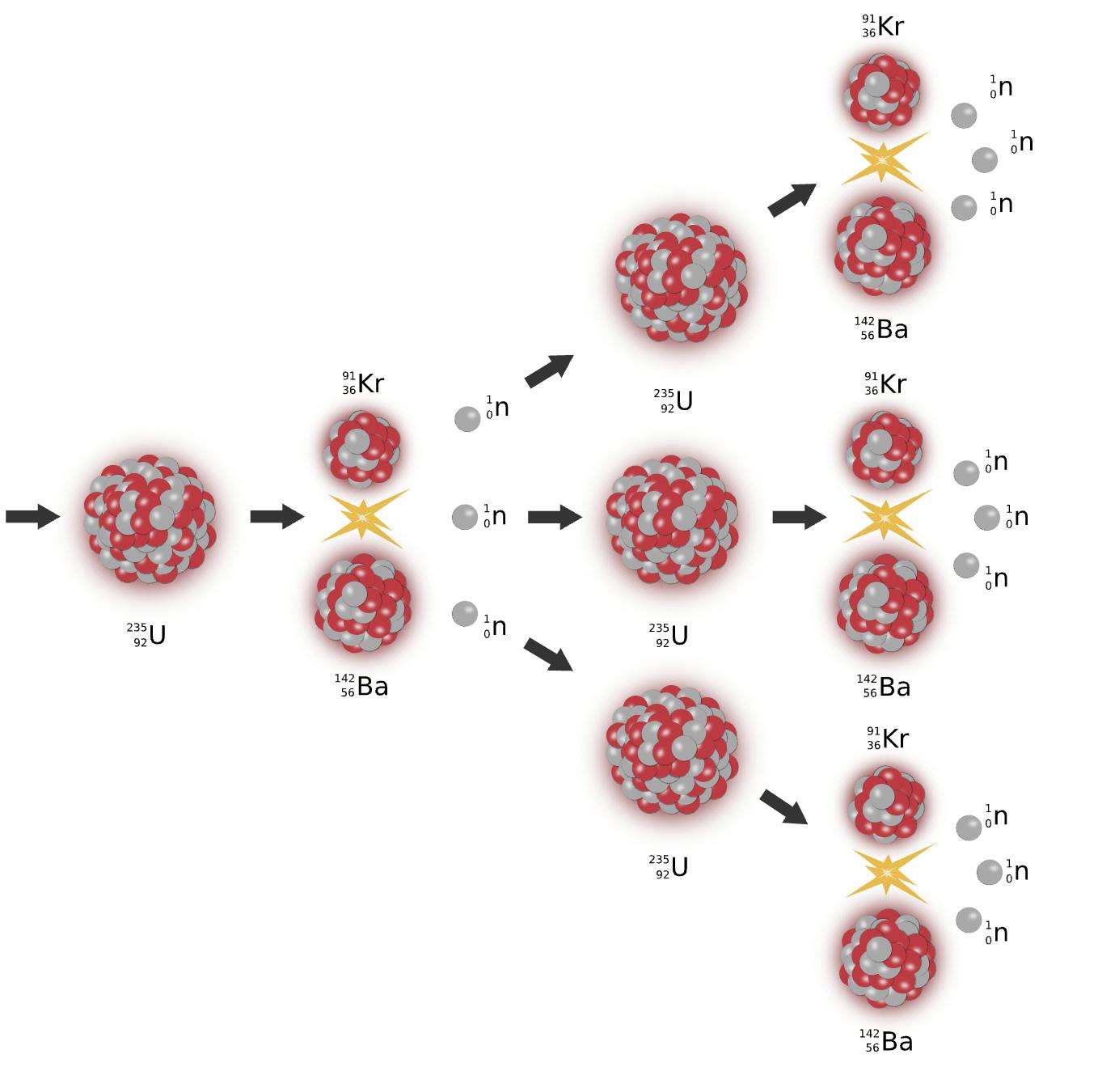
Source: Psiberg
To test out these ideas, Fermi and Szilard built the first feasible design for a nuclear reactor, called the Chicago Pile-1. It was constructed in 1942 at the University of Chicago as part of the broader Manhattan Project. Its secret demonstration of a sustained fission reaction was the first major success of the Manhattan Project.
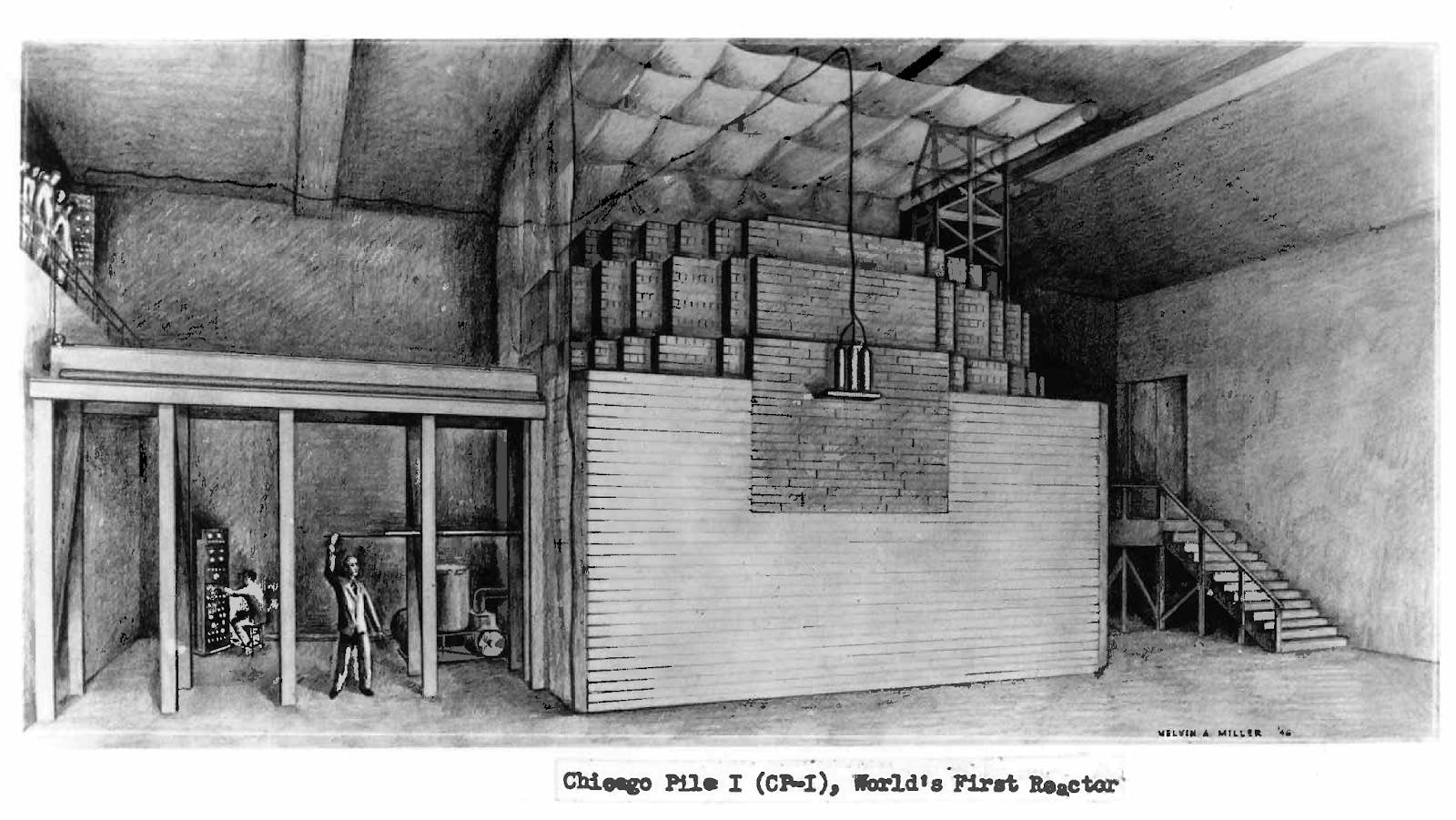
Source: Department of Energy
Following the war, Eisenhower encouraged the spread of nuclear power through his program Atoms for Peace in 1953. By 1958, the Shippingport Atomic Power Station in the United States became operational. However, on this, the Soviets beat out the United States, opening the world’s first grid-connected, electricity-generating commercial nuclear power plant in 1954 — the Obninsk Nuclear Power Plant.
The First Commercial Nuclear Reactors
The essential concept behind nuclear power plants is similar to most other power plants. All power plants want to produce heat. This heat is then used to boil water and generate steam which engages a turbine that generates electricity.
One of the major differences with nuclear plants is just how much heat they can produce given the amount of fuel they use. A single uranium pellet — which is a small thimble-sized cylinder — contains in it as much energy as a ton of coal, 149 gallons of gasoline, or 17,000 cubic feet of natural gas. The peculiar characteristics of nuclear fuel, its fickleness, and associated dangers are the reasons for the unique designs required for nuclear plants versus other types of power plants.
The most traditional and common design for a nuclear reactor is the light water thermal reactor. All 92 nuclear plants in the United States are built according to this design. The goal of all reactors is to produce a self-sustaining nuclear reaction that is capable of producing a constant amount of power. In general, there are two things that are necessary for such a self-sustaining reaction.
The first is possessing enough nuclear fuel such that once one uranium isotope undergoes fission, the neutrons it releases will engage enough additional uranium isotopes to further engage other uranium isotopes and eventually produce a stable chain reaction. Trillions of fission reactions are required per second to produce sufficiently high temperatures to generate electricity, which is why millions of uranium fuel pellets are needed. Inside their reactor cores, nuclear plants may contain up to 10 million pellets, assembled into fuel rods, which are in turn arranged into fuel assemblies and inserted into the belly of the reactor.
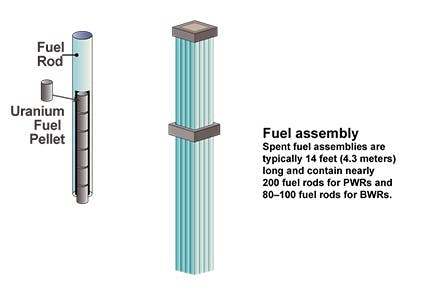
Source: US NRC
The second essential component of thermal reactor design is reaction moderation. Perhaps counterintuitively, a hotter reactor core doesn’t necessarily result in more fission reactions. The quantum world defies many of the common sense rules governing classical mechanics, and the behavior of uranium-235 is no exception. Uranium-235, the most common nuclear fuel used in most reactors, in fact, has a higher likelihood of undergoing fission when the neutrons bombarding it are moving relatively slowly. This can be seen in the graph below which shows that fission is most likely to occur at low neutron speeds and less likely to occur when neutrons are traveling very fast.
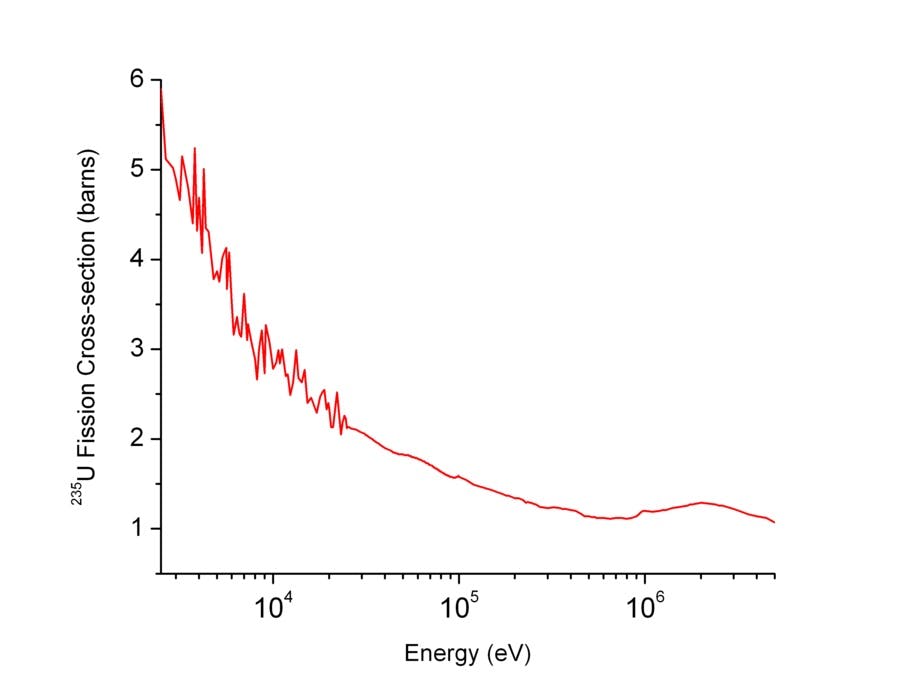
This is particularly important since the neutrons emitted during fission travel faster than the incident neutron that hit it in the first place. Thus, without a moderating force capable of slowing the neutrons down again, a stable chain reaction would not be possible.
The key to moderating, or slowing down, neutrons is to cycle water around the reactor core. The water molecules absorb the energy from the fast-traveling neutrons and reflect them back at the reactor core. This way, excess neutrons aren’t lost, and they are also slowed so that sustained fission can occur. In this way, water plays two essential roles in traditional reactors: producing steam to power the electricity-generating turbine, and moderating the reaction, allowing steady fission to occur.
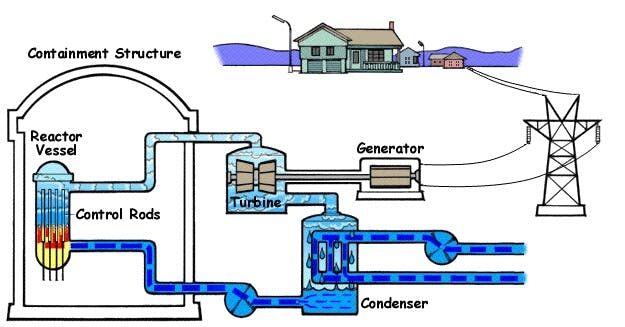
Source: US NRC
The Improvement of Nuclear Reactors Across Generations
Commercial-scale light water reactors were designed during the 1960s and built across the United States during the 1970s and 80s. They were considered successors to the earlier experimental prototype reactors developed during the 1940s and thus were called “Generation II” reactors. Most of the 440 operational nuclear plants around the world are Generation II reactors and operate according to the principles described above.
However, the design principles for nuclear plants continued to evolve even after Generation II schemes were drawn up. Following the accidents at Three Mile Island in 1979 and Chernobyl in 1986, both of which involved issues with the coolant systems used to temper the reactor cores, attempts were made to design power plants that incorporated passive cooling systems.
So, for instance, whereas most reactors today rely on pumps or external power sources to actively push cool water into reactor cores, Generation III reactors instead rely on natural mechanisms like convection to circulate water around the core and cool it. Though Generation III designs have been around since the 1970s, public sentiment toward building more nuclear was so negative that only four Generation III nuclear reactors have been built in the world — and none of them were built in the United States.
The lack of adoption didn’t stop scientists from considering even further improvements to nuclear design. In particular, outside of safety, there were two key categories in which both Generation II and Generation III reactors fell short — thermal efficiency and waste reduction.
Improved Thermal and Fuel Efficiency
Thermal efficiency measures how effectively a plant is converting the heat generated by its nuclear reactor into useful electricity. The main determinant of a reactor’s thermal efficiency is the coolant it uses. The coolant is the medium that transports heat from the reactor to engage the turbine generating electricity. If the coolant used in a reactor could absorb even more of the heat generated by nuclear fission and transfer it into electricity production, thermal efficiency, and fuel efficiency could be greatly improved, because you would be getting more power for the same amount of fuel used.
Water is one of the most common coolants used by nuclear reactors. A big problem with using water as a coolant, however, is that water has a relatively low boiling point. Thus, many light water reactors have to pressurize water to increase its boiling temperature to around 300°C up from 100°C in order for it to become an effective coolant. However, building reactors to accommodate such high pressures is difficult and expensive. Heavy and thick steel vessels are required to keep all the components intact while dealing with pressurized water coolant, often requiring a thickness of 12 inches for the vessels. All of this is done to achieve thermal efficiency which is capped at 30%, meaning only a third of the power unleashed via nuclear fission would be converted to electricity.
Around the turn of the 21st century, scientists and engineers were keen to find ways to improve thermal efficiency. In 2001, a Generation IV International Forum was organized to outline designs that would be capable of improving reactor efficiency even further. After considering hundreds of possible designs, the forum agreed on seven distinct designs that they recommended to become the focus of future nuclear research and development.
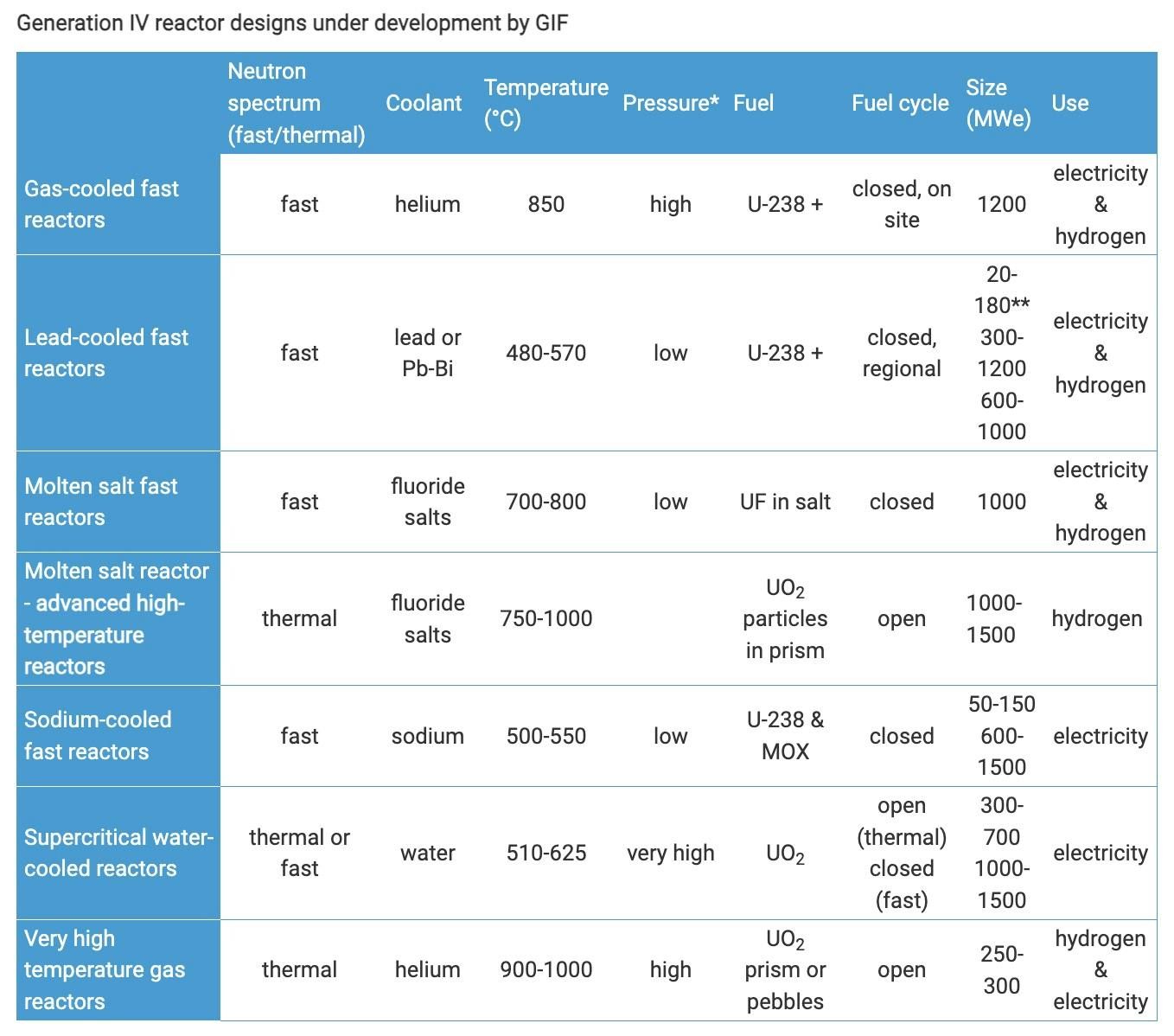
Source: World Nuclear Association
All of these designs were made to operate at temperatures far exceeding those seen in the Generation II reactors operating inside most nuclear plants as of 2023. Two of the designs proposed the use of helium as a coolant because helium can be heated to extremely high temperatures. It thus displays high thermal conductivity, but it has to be compressed to high pressures. Other designs feature dense liquid coolants like fluoride salts or metal coolants like lead, both of which have boiling points at temperatures surpassing 1000°C. As a result of achieving such high temperatures, many of the Generation IV reactor designs are theoretically capable of achieving thermal efficiencies of 40-45%.
Fast Reactors and Closed Fuel Cycles
Another challenge the forum sought to tackle was the question of nuclear waste. Traditional Generation II nuclear reactors have what is called an open fuel cycle, which produces nuclear waste requiring safe storage. So, in light water reactors, for example, once all the fuel in the fuel rods is used up, they need to be switched out for new ones. This occurs every 18-20 months, and re-fueling takes roughly a month to complete. The spent fuel, though not suitable for the reactor any longer, is still extremely radioactive and requires diligent storage — a logistical question that is a hassle for governments and a source of anxiety for consumers.
Already, more than a quarter million metric tons of radioactive waste has been produced around the world, with the US alone home to 90,000 metric tons of nuclear waste. In the 1980s, there was a proposal to store all American nuclear waste in a deep geological storage facility 660 meters below Yucca Mountain in Nevada. However, due to political frictions, this plan was never enacted. As a result, much of the US’s nuclear waste is still held in disparate locations across the country.
Uranium fuel rods are generally composed of 5% uranium-235, the uranium isotope most likely to undergo fission, and the rest being composed of uranium-238. Uranium-238 is not considered a fissile material and does not immediately undergo fission after absorbing a neutron. It is very unlikely for uranium-238 to absorb a neutron moving at slow speeds in the first place, though when it does rarely happen, uranium-238 transmutes into uranium-239, which then beta decays twice to become plutonium-239. Plutonium-239 is a very radioactive and fissile material itself with a half-life of over 24,000 years. Since the transmutation to plutonium is rare, there is very little of it found in nuclear waste — about 1%. However, it is still present and thus needs to be disposed of safely.
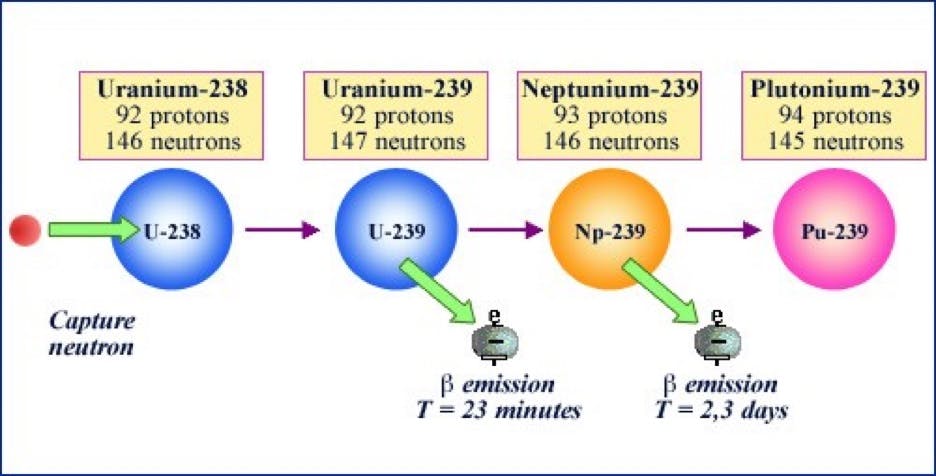
Source: Radioactivity EU
Dealing with nuclear waste is a tedious and politically fraught task, which is why reactor designs that don’t need to dispose of nuclear waste at all, but could find some way to productively use all nuclear material, would be very valuable indeed. Luckily, such designs already exist! In fact, they were developed way back in the 1950s. They’re called fast reactors. The key insight with fast reactors is that when neutrons are moving very quickly, even traditionally non-fissile material like uranium-238 becomes more likely to undergo fission when hit by a neutron. Therefore, fast reactors do not moderate nuclear reactions, meaning they don’t try to slow down the speed of neutrons spewed out from fission reactions. Instead, fast-moving neutrons become useful, since they can engage some portion of the uranium-238 atoms to undergo fission directly or transmute into plutonium-239, which then, in turn, undergoes fission too.
Though other kinds of radioactive isotopes are capable of directly undergoing fission at higher neutron speeds, the overall likelihood of fission happening in uranium-235 or plutonium-239 isotopes declines, since the more fissile materials prefer slower moving neutrons. To compensate for this, fast reactors typically need fuel with higher enrichment than typical light water reactors. Still, fast reactors are a promising solution since their spent fuel rods can be recycled for use in future fast reactor cycles when re-enriched. Thus, fast reactors are said to have closed fuel cycles, since theoretically no nuclear waste will need to be disposed of.
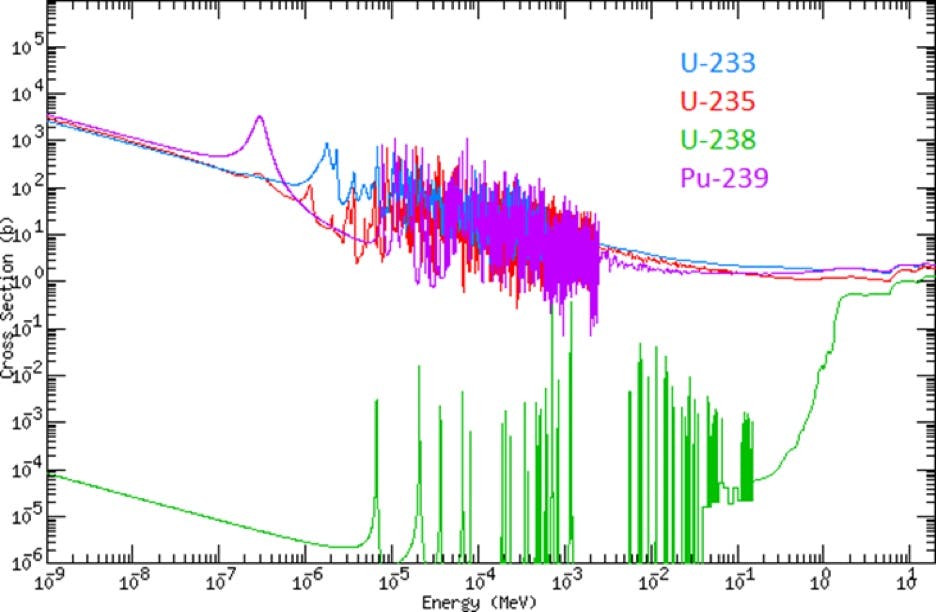
Source: LibreTexts Engineering
Though a number of experimental fast reactors were built in the United States between the late 1950s and 60s, all of them were decommissioned and none were used at commercial scale. Despite being a major focus of Generation IV designs, fast reactors were seen as politically risky since they are capable of producing plutonium-239, which could be used for the development of nuclear weapons. As a result, Russia is the only country with active, commercial-scale fast reactors in operation as of 2023.
Small Modular Reactors and the Future of Nuclear Energy
Despite the decades of investigation and research that went into Generation IV designs, no commercially operating Generation IV plants have been built. Given the rising costs of constructing large-scale nuclear facilities, especially in the face of alternatives like natural gas plants or solar and wind farms, it is unlikely that they will be built any time soon.
However, this doesn’t necessarily have to be damning for nuclear energy’s prospects. Traditional large nuclear plants, capable of generating a gigawatt of power at a time, not only cost tens of billions of dollars to build but there is very little that is repeatable in the building process since each project is unique to its location, limiting economies of scale. Despite the political difficulty of building nuclear plants in the United States, the US Department of Energy has been rather eager to encourage the development of smaller, more modular reactor designs that can be pre-fabricated in factories, trucked to their destination, and quickly assembled on-site.
One such small module reactor manufacturer is NuScale Power. This company produces reactors only 20 meters tall that are capable of generating 60 megawatts. For a total of $3 billion, NuScale claims that it can install a dozen 60-megawatt small modular reactors (SMRs) to create a larger 720-megawatt nuclear power plant. That’s a significant discount to the cost of building large gigawatt-scale plants, like the $28 billion plant currently being assembled at the Vogtle plant in Waynesboro, Georgia.
NuScale’s modular reactors rely on low-enriched uranium fuel in light water reactor designs but contain passive safety and cooling systems. In January 2023, the NuScale’s small modular reactor design was approved by the Nuclear Regulatory Commission and the company is now building out a complex of its reactors in Idaho.
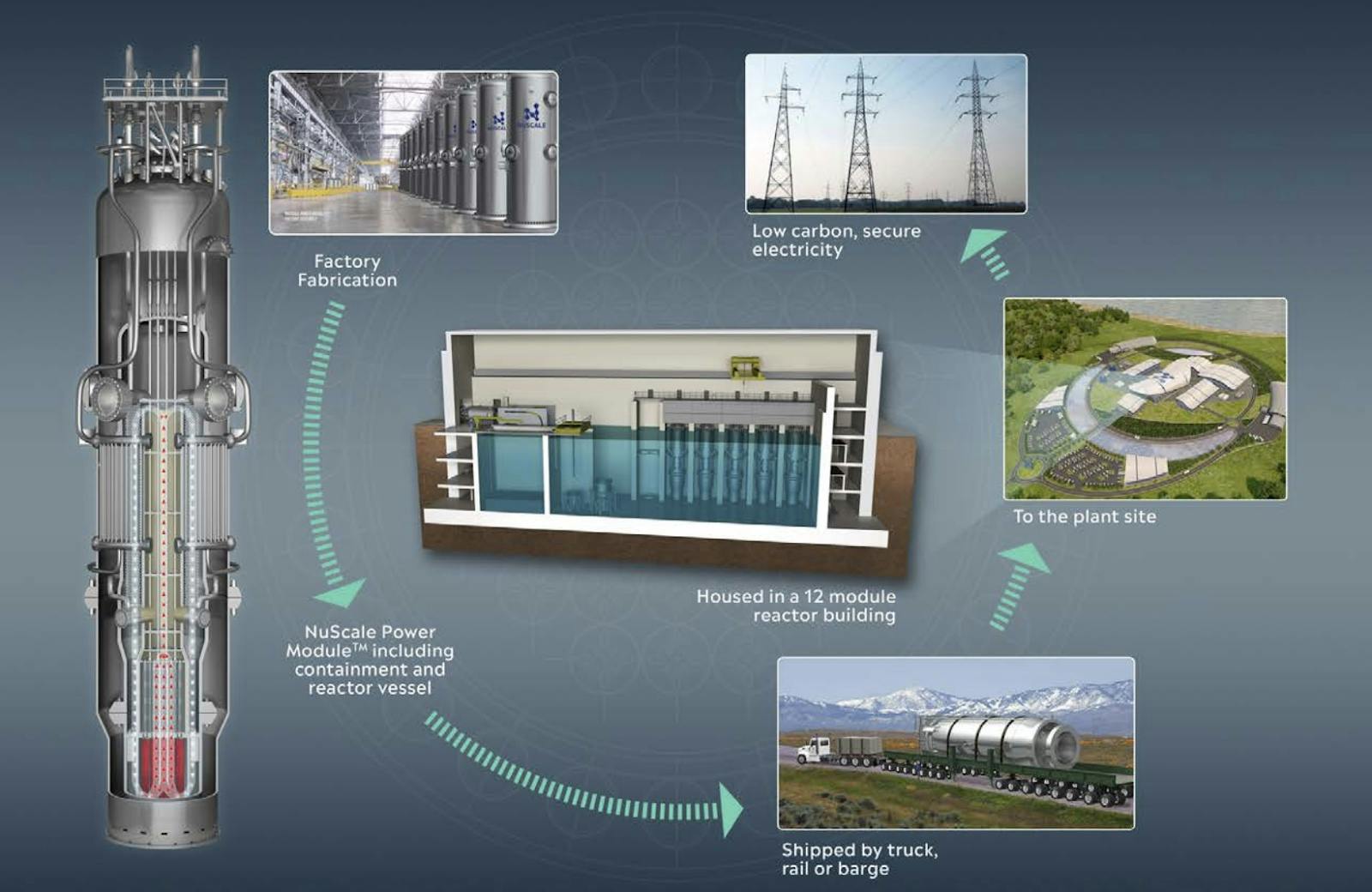
Source: International Atomic Energy Association
However, NuScale’s design is just one of many of those possible for small modular reactors. TerraPower, backed by Bill Gates, is another venture that is developing SMRs. However, unlike NuScale, TerraPower uses fast reactor technology with liquid sodium as a coolant. The company has received grants from the Department of Energy to build a 345 MW demonstration plant in Wyoming.
Finally, Oklo is yet another fast-reactor SMR startup. Oklo plans to go public via SPAC in 2024, with participation from Sam Altman. The company is intent on putting fast reactor technology’s potential to the test. Heralded for being able to turn what would normally be considered nuclear waste into fuel, Oklo is planning on reusing uranium recovered from experimental breeder reactors such as the EBR-II in Idaho.
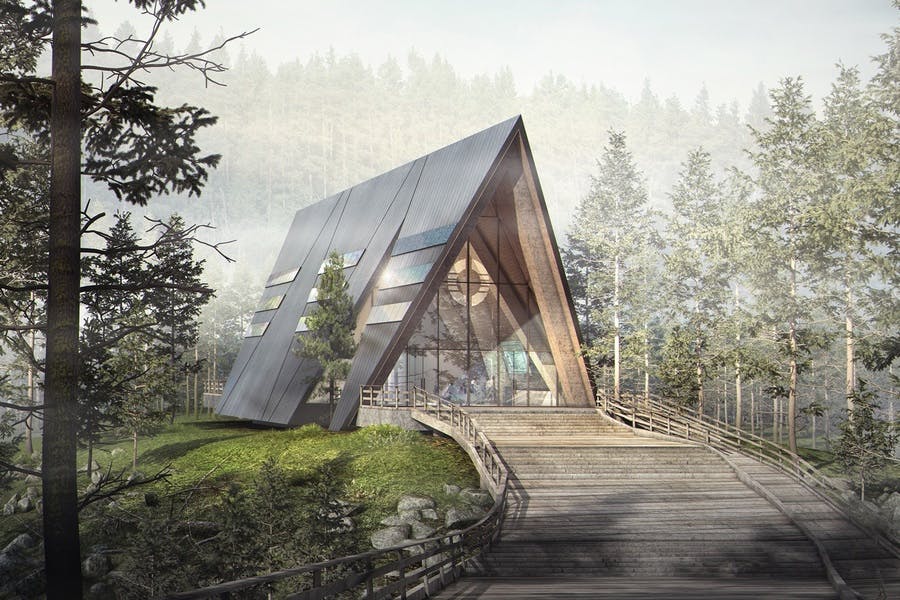
Source: Oklo
The US government’s support for intrepid nuclear designs is a very positive sign, and frankly, a necessity in an industry that has been hampered by historically low popular appeal and costs that are only rising for traditional plant construction.
Though many of these designs likely fall short of being cost-competitive with natural gas plants or solar and wind installations, their modular designs have the benefit of being capable of installation nearly anywhere in the country. Many envision a future where small modular reactors can provide energy to far-off, remote locations, or even be installed on-site at large industrial plants or military bases to provide consistent and reliable local power. With a little time and a little faith, the decline of the nuclear industry might yet see a stunning reversal where decentralized and local rather than centralized nuclear power prevails.
Disclosure: Nothing presented within this article is intended to constitute legal, business, investment or tax advice, and under no circumstances should any information provided herein be used or considered as an offer to sell or a solicitation of an offer to buy an interest in any investment fund managed by Contrary LLC (“Contrary”) nor does such information constitute an offer to provide investment advisory services. Information provided reflects Contrary’s views as of a time, whereby such views are subject to change at any point and Contrary shall not be obligated to provide notice of any change. Companies mentioned in this article may be a representative sample of portfolio companies in which Contrary has invested in which the author believes such companies fit the objective criteria stated in commentary, which do not reflect all investments made by Contrary. No assumptions should be made that investments listed above were or will be profitable. Due to various risks and uncertainties, actual events, results or the actual experience may differ materially from those reflected or contemplated in these statements. Nothing contained in this article may be relied upon as a guarantee or assurance as to the future success of any particular company. Past performance is not indicative of future results. A list of investments made by Contrary (excluding investments for which the issuer has not provided permission for Contrary to disclose publicly, Fund of Fund investments and investments in which total invested capital is no more than $50,000) is available at www.contrary.com/investments.
Certain information contained in here has been obtained from third-party sources, including from portfolio companies of funds managed by Contrary. While taken from sources believed to be reliable, Contrary has not independently verified such information and makes no representations about the enduring accuracy of the information or its appropriateness for a given situation. Charts and graphs provided within are for informational purposes solely and should not be relied upon when making any investment decision. Please see www.contrary.com/legal for additional important information.

